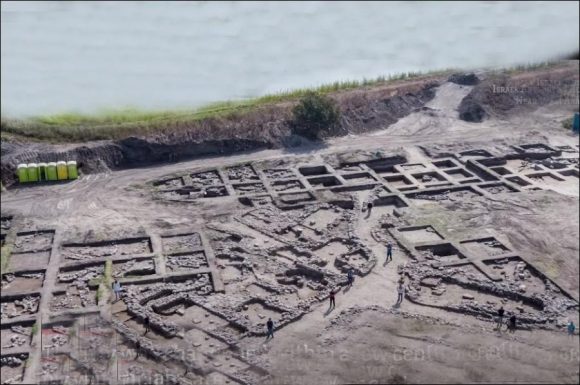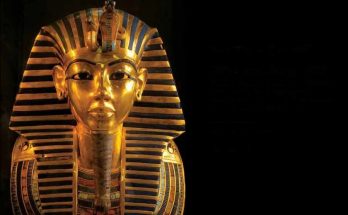New-found city was abandoned within a few centuries of its peak.
Archaeologists in Israel have uncovered the remains of an “immense” 5,000-year-old city, the Israel Antiquities Authority said, shedding new light on a period when the region’s rural population began building larger urban centers. Halfway between the cities of Tel Aviv and Haifa, the 160-acre site at En Esur was revealed during roadworks on a new interchange to the town of Harish.
“Our site is more than two or three times larger than the largest sites (in this area) during this period,” archaeologist Yitzhak Paz told CNN. “Most sites were excavated in very small scale, while our site was excavated on an immense scale.”
At the crossroads of two ancient trading routes, with fertile soil and two springs, the site was a prime location for ancient development. Archaeologists estimate that approximately 6,000 people lived here during the Bronze Age at the end of the 4th millennium BC.
“This is the Early Bronze Age New York of our region,” archaeologists working on the site said in a joint statement, “a cosmopolitan and planned city where thousands of inhabitants lived.”
The site was discovered on top of an even older, 7,000-year-old settlement, uncovered in excavations below the city’s houses. Thousands of teenagers and volunteers helped in the excavations, which began two-and-a-half years ago.
“For the first time, we find a site that includes each and every characteristic of organization, including fortification, urban planning, street systems, public spaces, public structures, and more,” Paz said.
At the time, the city was more than 10 times larger than Jericho, considered one of the the oldest continuously occupied cities in the world, Paz said. In the Early Bronze Age, Jericho covered some 13 acres, according to Paz, while the city at En Asur covered 160 acres.
In the site’s public area, archaeologists uncovered an “unusual” ritual temple with a large stone basin in its courtyard, apparently used during the performance of religious rituals, archaeologists involved in the project said.
A structure with burnt animal bones from animal sacrifices and rare figurines were found inside the temple. Photos from the site show numerous small stone carvings of animals, as well as a carving of a human head and a seal of office.
“Such a city could not develop without having behind it a guiding hand and an administrative mechanism,” the archaeologists said in their statement. “Its impressive planning, the tools brought to Israel from Egypt found at the site, and its seal impressions are proof of this. This is a huge city — a megalopolis in relation to the Early Bronze Age, where thousands of inhabitants, who made their living from agriculture, lived and traded with different regions and even with different cultures and kingdoms.”
However, within a few centuries of the city reaching its peak, the site was completely abandoned, Paz said. “There is some research that tried to look into natural reasons such as the rise of humidity that caused a process of flooding throughout the coastal plain,” Paz said. “There is a possibility that the site was flooded and swamps made life unbearable.”
But Paz admits a definitive answer is elusive. There are no signs of violent destruction or a sudden natural disaster. “We still have to figure out the reasons for the abandonment,” he said.
Views: 303




